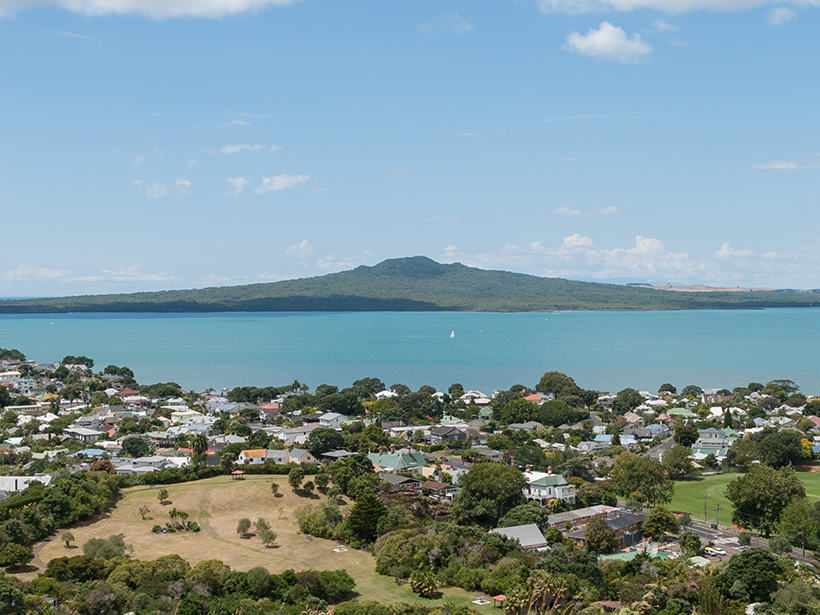Seismic noise has dropped by half during coronavirus lockdown measures, giving scientists a rare lull to search for hidden signals usually drowned out by human activities.
Researchers measure seismic waves coming from natural sources, like earthquakes and volcanoes, as well as human activities. Trucks, cars, factories, and even shopping can create high-frequency seismic waves radiating out from population centers, and most scientists filter out human noise to seek for natural signals.
Seismic noise has been unusually quiet lately, in what scientists are calling the “anthropause.”
But seismic noise has been unusually quiet lately, in what scientists are calling the “anthropause.”
“If it’s quieter now and we can pick up some of the smaller signals, that improves our seismic risk analyses,” said Paula Koelemeijer, a lead author on a study published today in the journal Science.
Tracking smaller earthquakes can help scientists understand larger, more dangerous quakes and monitor how faults move. When a magnitude 5.0 earthquake struck Petatlán, Mexico, on 4 July, a station 380 kilometers away was able to detect the quake from raw data. Normally, the station would have missed the small quake without filtering out noise.
“This is likely to become a landmark article in the fields of seismic monitoring and ambient noise tomography,” said volcanologist Jan Lindsay at the University of Auckland who was not involved in the study. “The ‘2020 seismic noise quiet period’ will likely become something that Earth science students of the future will learn about in textbooks.”
Globally, seismic noise dropped by a median average of 50% during the coronavirus lockdowns from March through May. The measurement includes all seismic signals, but scientists attribute the drop to human activity by comparing changes in seismic noise with mobility data from Google and Apple.
“This study impressively demonstrates just how much man-made noise there actually is.”
The drop in noise varied by location: It decreased by 33% in Brussels, Belgium; 50% in Sri Lanka; and 10% in Central Park, New York. Rural areas grew quieter too—noise at a station at Rundu, Namibia, dropped by over 25%. (Koelemeijer attributed the drop to fewer tourists at a popular hippo-watching spot nearby.) The study pulled data from 185 seismic stations across the globe in both urban and rural locales and included information from professional instruments as well as those on public platforms.
“This study impressively demonstrates just how much man-made noise there actually is,” said research associate Carolin Böse at the GFZ German Research Centre for Geosciences who was not involved in the research. “Seismologists around the world now have a chance to make good use of the data presented in this study and hunt for otherwise ‘hidden signals’ in the seismic recordings.”
One of those hidden signals could be volcanic tremors in Auckland, New Zealand. One and a half million people live in the area, which is affected by a volcanic field underlying the city. Comparing the seismic noise before and after lockdown could help scientists uncover volcanic earthquakes, said Lindsay. “In theory, this could provide critical extra warning time in the lead up to a future eruption.”
“If you’re just stuck in your house and your normal activities can’t continue at the moment, it is comforting and motivating that we’re seeing this all around the world.”
This study builds on others tracking changes to Earth as a result of the coronavirus. Past work revealed that emissions from common pollutants from fossil fuels, such as carbon dioxide and nitrogen dioxide, have plummeted during the lockdowns.
Koelemeijer expects follow-up studies on seismic noise, which some scientists can use to image the inner Earth, and a fresh appreciation for human-caused seismic noise. She also sees a global effort to stop the spread of the coronavirus.
“If you’re just stuck in your house and your normal activities can’t continue at the moment, it is comforting and motivating that we’re seeing this all around the world,” Koelemeijer said. “Everyone is in this together.”
—Jenessa Duncombe (@jrdscience), Staff Writer
Citation:
Duncombe, J. (2020), The seismic hush of the coronavirus, Eos, 101, https://doi.org/10.1029/2020EO147422. Published on 23 July 2020.
Text © 2020. AGU. CC BY-NC-ND 3.0
Except where otherwise noted, images are subject to copyright. Any reuse without express permission from the copyright owner is prohibited.

